3-甲基-2-丁醇
一般危化品

3-甲基-2-丁醇结构式
|
常用名 | 3-甲基-2-丁醇 | 英文名 | UNII:93FF0F303R |
|---|---|---|---|---|
| CAS号 | 598-75-4 | 分子量 | 88.148 | |
| 密度 | 0.8±0.1 g/cm3 | 沸点 | 113.6±8.0 °C at 760 mmHg | |
| 分子式 | C5H12O | 熔点 | N/A | |
| MSDS | 中文版 美版 | 闪点 | 26.7±0.0 °C | |
| 符号 |


GHS02, GHS07 |
信号词 | Warning |
3-甲基-2-丁醇用途溶剂,照相化学药品,香精原料,分析试剂。 |
| 中文名 | 3-甲基-2-丁醇 |
|---|---|
| 英文名 | 3-methyl-2-butanol |
| 中文别名 | 异丙基甲基甲醇 |
| 英文别名 | 更多 |
| 密度 | 0.8±0.1 g/cm3 |
|---|---|
| 沸点 | 113.6±8.0 °C at 760 mmHg |
| 分子式 | C5H12O |
| 分子量 | 88.148 |
| 闪点 | 26.7±0.0 °C |
| 精确质量 | 88.088814 |
| PSA | 20.23000 |
| LogP | 1.04 |
| 外观性状 | 透明无色液体 |
| 蒸汽压 | 10.6±0.4 mmHg at 25°C |
| 折射率 | 1.403 |
| 储存条件 | 将密器密封,储存密封的容器内,并放在阴凉、干爽的位置。 |
| 稳定性 | 常温常压下,或不分解产物。 |
| 分子结构 | 1、 摩尔折射率:26.66 2、 摩尔体积(cm3/mol):109.3 3、 等张比容(90.2K):242.5 4、 表面张力(dyne/cm):24.2 5、 极化率(10-24cm3):10.57 |
| 计算化学 | 1.疏水参数计算参考值(XlogP):无 2.氢键供体数量:1 3.氢键受体数量:1 4.可旋转化学键数量:1 5.互变异构体数量:无 6.拓扑分子极性表面积20.2 7.重原子数量:6 8.表面电荷:0 9.复杂度:32.9 10.同位素原子数量:0 11.确定原子立构中心数量:0 12.不确定原子立构中心数量:1 13.确定化学键立构中心数量:0 14.不确定化学键立构中心数量:0 15.共价键单元数量:1 |
| 更多 | 1. 性状:无色透明液体,有果香味。 2. 沸点(ºC,101.3kPa):111.5 3. 相对密度(g/mL,20/4ºC):0.8179 4. 折射率(n20ºC):1.4096 5. 黏度(mPa·s,20ºC):3.51 6. 闪点(ºC,开口):35 7. 闪点(ºC,闭口):39.4 8. 汽化热(KJ/mol,沸点):40.10 9. 生成热(KJ/mol,25ºC):-314.22 10. 比热容(KJ/(kg·K)):2.63 11. 临界温度(ºC):300.85 12. 临界压力(MPa):3.87 13. 蒸气压(kPa,20ºC):1.07 14. 溶解度(%,水,20ºC):6.5 15. 溶解性:能与乙醇、乙醚混溶,微溶于水。 16. 相对密度(25℃,4℃):0.8137 17. 常温折射率(n25):1.4075 18. 偏心因子:0.351 19. 溶度参数(J·cm-3)0.5:21.607 20. van der Waals面积(cm2·mol-1):8.960×109 21. van der Waals体积(cm3·mol-1):62.610 22. 气相标准燃烧热(焓)(kJ·mol-1):3367.62 23. 气相标准声称热(焓)( kJ·mol-1) :-314.93 24. 气相标准熵(J·mol-1·K-1) :388.61 25. 气相标准生成自由能( kJ·mol-1):-157.95 26. 液相标准燃烧热(焓)(kJ·mol-1):-3315.95 27. 液相标准声称热(焓)( kJ·mol-1):-366.60 28. 液相标准热熔(J·mol-1·K-1):202.5 |
|
|||||||||||||||||||||||||||||||||||||||||||||||||||||||||||||||||||||||||||||||||||||||||||||||||||||||||||||||||||||||||||||||||||||||||||||||||||||||||||||||||||||||||||||||||||||||||||||||||||||||||||||||||||||||
|
3-甲基-2-丁醇毒理学数据: 属低毒类。有刺激性,能刺激眼睛及呼吸器官。长期暴露在其蒸气中能引起头痛、咳嗽等症状。属低毒类。有刺激性,能刺激眼睛及呼吸器官。长期暴露在其蒸气中能引起头痛、咳嗽等症状。 3-甲基-2-丁醇生态学数据: 该物质对环境可能有危害,对水体应给予特别注意。 |
| 符号 |


GHS02, GHS07 |
|---|---|
| 信号词 | Warning |
| 危害声明 | H226-H332-H335 |
| 补充危害声明 | Repeated exposure may cause skin dryness or cracking. |
| 警示性声明 | P261 |
| 个人防护装备 | Eyeshields;Faceshields;full-face respirator (US);Gloves;multi-purpose combination respirator cartridge (US);type ABEK (EN14387) respirator filter |
| 危害码 (欧洲) | Xn:Harmful; |
| 风险声明 (欧洲) | R10;R20 |
| 安全声明 (欧洲) | S16 |
| 危险品运输编码 | UN 1105 3 |
| WGK德国 | 1 |
| 包装等级 | III |
| 危险类别 | 3.0 |
| 3-甲基-2-丁醇上游产品 9 | |
|---|---|
| 3-甲基-2-丁醇下游产品 8 | |
1.将600g2-溴丙烷和300ml乙醚配成的溶液,滴加到250ml乙醚和146g镁悄的混合物中,冷却反应物至-5℃,缓缓加入200g乙醛和250ml乙醚配成的溶液。将反应混合物倒入2kg碎冰中使镁盐分解,用倾析法除去过量的镁,用15%硫酸溶解碱性卤化镁。分取乙醚层,分馏,收集110-111.5℃馏分,得210-215g3-甲基-2-丁醇,收率53-54%。
2.制法:
于装有搅拌器、温度计、回流冷凝器(装一只氯化钙干燥管)、滴液漏斗的干燥的反应瓶中,加入镁屑37.5g(1.54mol),少量结晶碘。再用异丙基溴185g(1.5mol)和无水乙醚200mL,按常规方法制备Grignard试剂(2)。制备完后,冰盐浴冷却至-5℃~-10℃。慢慢滴加67g(1.53mol)乙醛①溶于90mL无水乙醚溶液,约0.5h加完,滴加过程中,保持反应液温度不超过-5℃。将反应物倒入700g碎冰中,未反应的过量的镁不要倒入。加入350mL(15%)的硫酸,充分搅拌。静置后,分出有机层,水层用乙醚提取(50mL×4),合并乙醚层,无水碳酸钾干燥,分馏,收集110~112℃的馏分,得3-甲基-2-丁醇(1)70g,收率52%。注:①乙醛的沸点为20.5~21℃.可以通过多聚乙醛的热解来很方便的制备。
|
Olfactometry Profiles and Quantitation of Volatile Sulfur Compounds of Swiss Tilsit Cheeses.
J. Agric. Food Chem. 63 , 7511-21, (2015) To establish the odor profiles of three differently fabricated commercial Swiss Tilsit cheeses, analyses were conducted using headspace solid-phase microextraction gas chromatography-mass spectrometry... |
|
|
Convenient QSAR model for predicting the complexation of structurally diverse compounds with β-cyclodextrins
Bioorg. Med. Chem. 17 , 896-904, (2009) This paper reports a QSAR study for predicting the complexation of a large and heterogeneous variety of substances (233 organic compounds) with beta-cyclodextrins (beta-CDs). Several different theoret... |
|
|
Volatile compounds originating from mixed microbial cultures on building materials under various humidity conditions.
Appl. Environ. Microbiol. 64(8) , 2914-9, (1998) We examined growth of mixed microbial cultures (13 fungal species and one actinomycete species) and production of volatile compounds (VOCs) in typical building materials in outside walls, separating w... |
| 3-Methyl-2-butanol |
| 1,2-Dimethylpropanol |
| MFCD00004527 |
| 3-Methylbutan-2-ol |
| 1,1-Dimethyl-2-propanol |
| EINECS 209-950-2 |
| butan-2-ol, 3-methyl- |
| METHYLISOPROPYLCARBINOL |
| UNII:93FF0F303R |
| 2-Methyl-3-butanol |
| 2-Butanol, 3-methyl- |
| Isopropylmethylcarbinol |
| 1,2-Dimethyl-1-propanol |
| DL-3-Methyl-2-butanol |

 CAS号5076-19-7
CAS号5076-19-7 CAS号563-80-4
CAS号563-80-4 CAS号621-84-1
CAS号621-84-1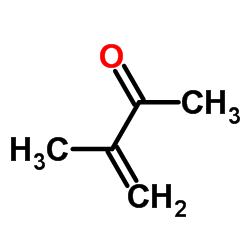 CAS号814-78-8
CAS号814-78-8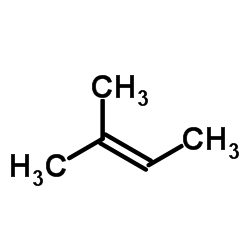 CAS号513-35-9
CAS号513-35-9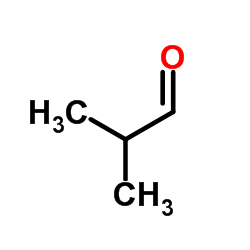 CAS号78-84-2
CAS号78-84-2 CAS号75-16-1
CAS号75-16-1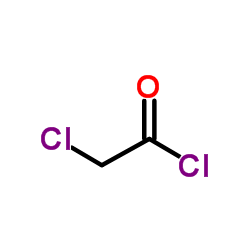 CAS号79-04-9
CAS号79-04-9 CAS号2999-74-8
CAS号2999-74-8 CAS号507-36-8
CAS号507-36-8 CAS号18295-25-5
CAS号18295-25-5 CAS号3905-64-4
CAS号3905-64-4 CAS号20798-05-4
CAS号20798-05-4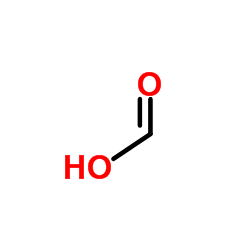 CAS号64-18-6
CAS号64-18-6 CAS号2278-22-0
CAS号2278-22-0